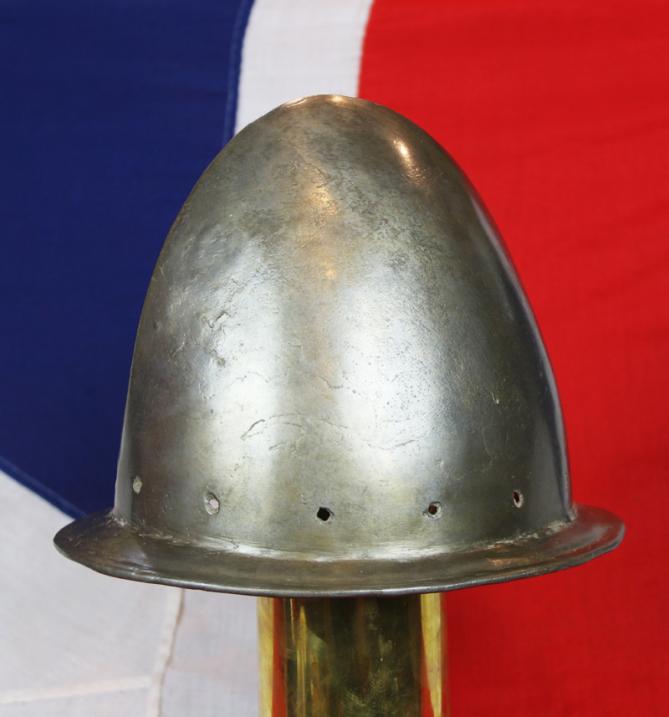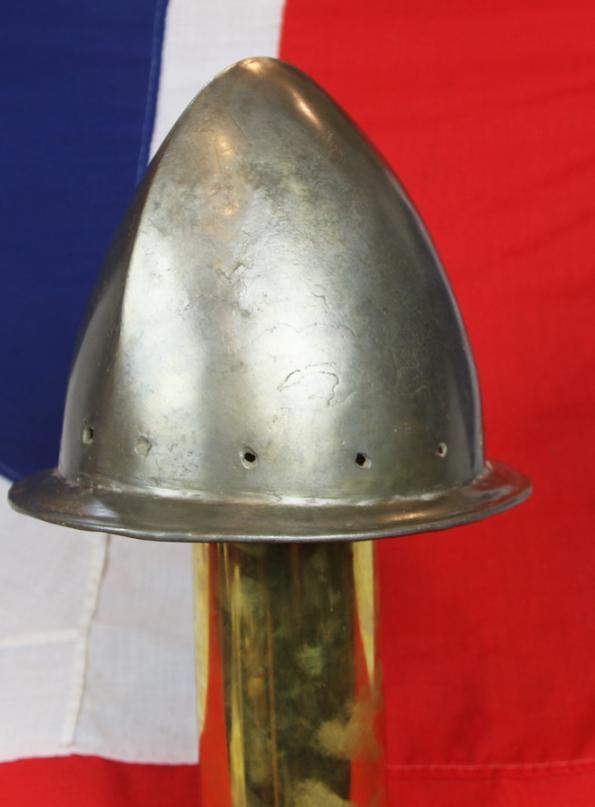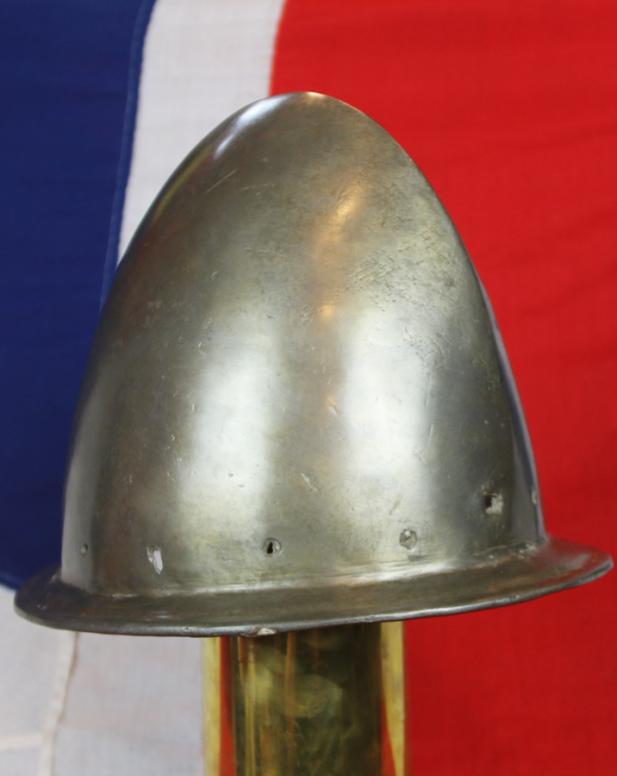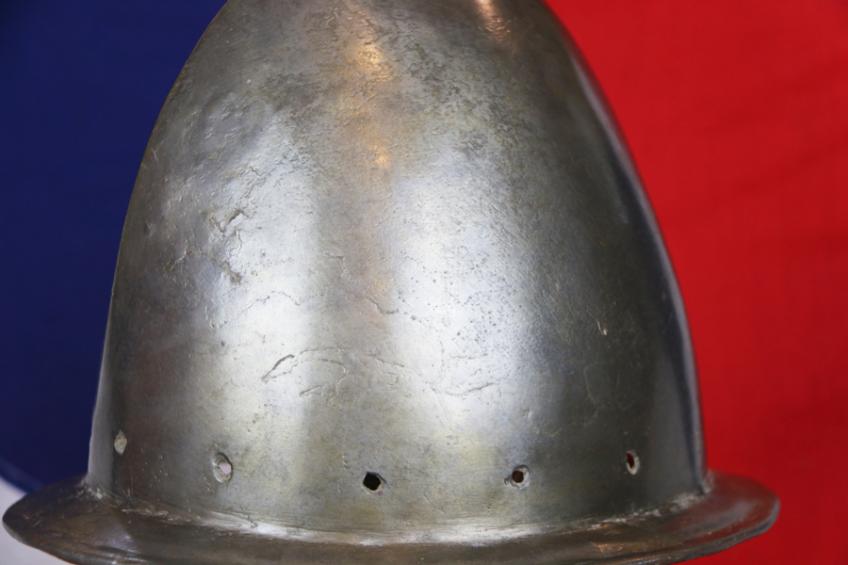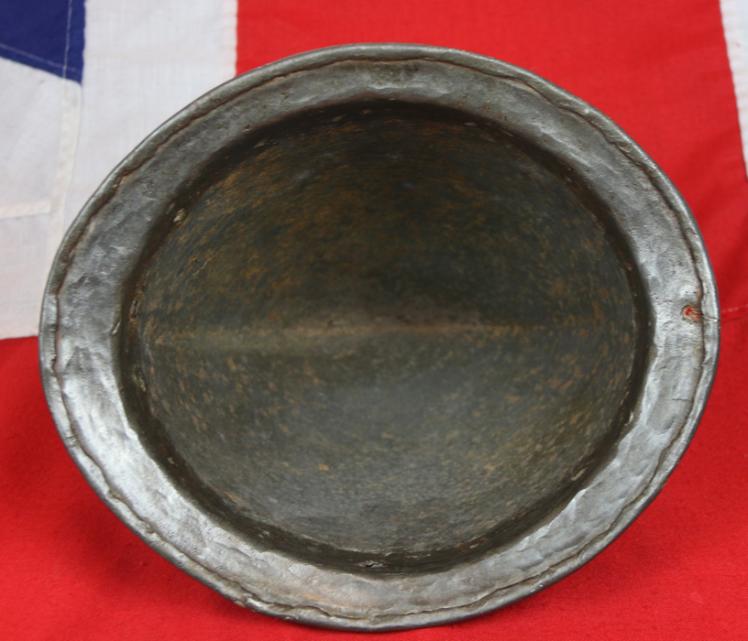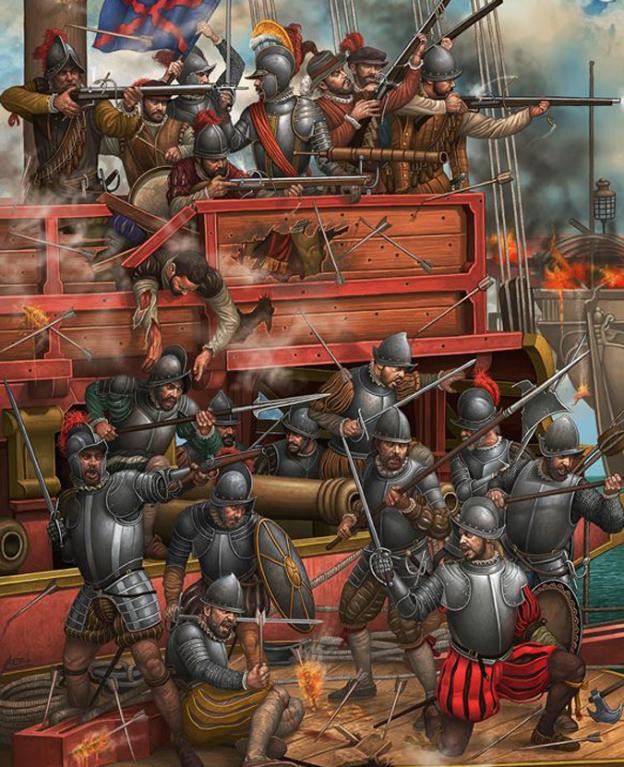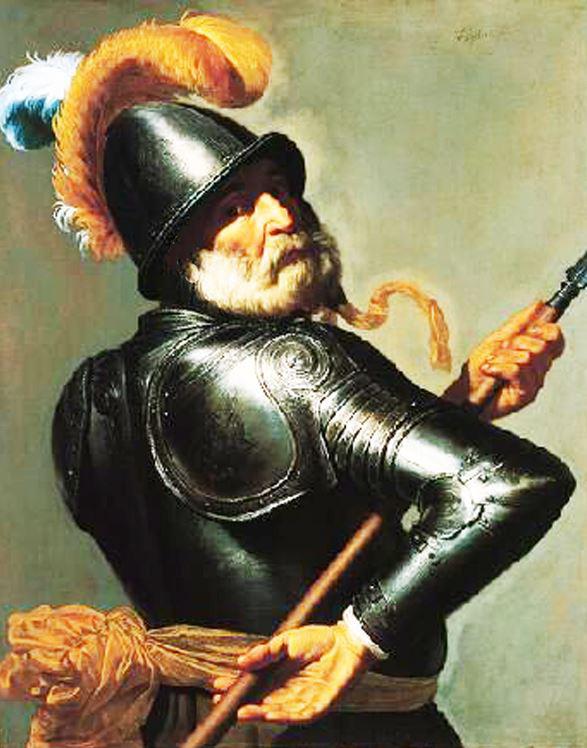Very Fine Late 16th Century, Morion Cabasset Helmet. A Queen Elizabeth Ist Helmet of the Spanish Armada Period Circa 1570. Captured From the Spanish Fleet, Re-issued to English Musketeers and Pikemen & Used Until the English Civil War of King Charles 1st
An Elizabethan armour cabasset helmet from the era of the unsuccessful Spanish 'Armada', the attempted invasion of England, during the Reign of Queen Elizabeth Ist. Used continually through the English Civil War and into the reign of King James. A fine one piece high peak cabasset helmet made in the mid to late 16th century. Wonderfully hand forged with hammer marks and with patches of delamination. This super helmet is nicely constructed with good edgework and lovely quality throughout, and it is a fine period piece in excellent condition for age. This form of helmet that survive today in England were often captured from the Spanish Armada armouries, and some even recovered from the sea bed alongside Spanish cannon, beneath the stricken Spanish ships, and subsequently issued to the London Trayned Bands. There is a picture in the gallery of the same form of helmet heavily rusted recovered from Jamestown, the early American colony fort. The History of the Cittie of London Trayned Bandes
(1572-1647)
In the absence of a regular army, the trained bands {nothing to do with musicians}, were founded in 1572 as part of Elizabeth I's efforts to modernise the militia, were the only permanent military units in England. While the county bands were often poorly organised, ineptly officered and infrequently trained, the London bands were not, although enthusiasm did wax and wane considerably over the years of their existence (1572 - 1647).
The Regiments
Before the Civil War there were four London regiments - the North, South, East and West - comprising a total of 6,000 men in 20 companies. In 1642, as relations between king & parliament worsened, the bands were re-organised into 40 companies of 8,000 men in six regiments named the Red, Blue, Green, White, Orange and Yellow after the colour of their regimental flags, or "trophies", as they were known to London militiamen. The following year, after the King's unsuccessful attempt to seize The Capital, three more trained band and five "auxiliary" regiments were raised bringing the whole force to around 20,000 men. This large army, controlled by the mayor and the city aldermen, held London for parliament throughout the first Civil War (1642 - 1646) and contributed brigades of foot to parliament's field armies. The establishment and subsequent rise of the New Model Army after 1645 greatly reduced the significance of the bands and they gradually melted away. Today, only the Honourable Artillery Company, a ceremonial unit of ex-soldiers, remains as a legacy of the glory days of London citizen's solders. Weapons & Equipment
Weapons and equipment conformed to statute laid down by the Privy Council. The following description is from the 1638 issue of "Directions for Musters".
The Pikeman
"Must be armed with a pike seventeen feet long, head and all; the diameter of the staff to be one inch 3/4, the head to be well steeled, 8 inches long, broad, strong and sword-pointed; the cheeks 2 foot long, well riveted; the butt end bound with a ring of iron, a gorget, back, breast, tassets and head piece, a good sword of 3 foot long, cutting and stiff pointed with girdle and hangers".
The Musketeers
"Must be armed with a good musket, the barrel four foot long, the bore of 12 bullets in the pound rowling in, a rest, bandolier, head-piece, a good sword, girdle and hangers".
One other picture is a period engraving of an Elizabethan soldier with his pear stalk cabasset, another picture of The Battle of Gravelines, August 8, 1588, which is of the defeat of the Spanish Armada by Sir Francis Drake, Queen Elizabeth's Admiral. Pictures shown for information only. Some text is quoted from an article by Mr Steve Rabbitts on London trayned bands
Code: 23226
1695.00 GBP

